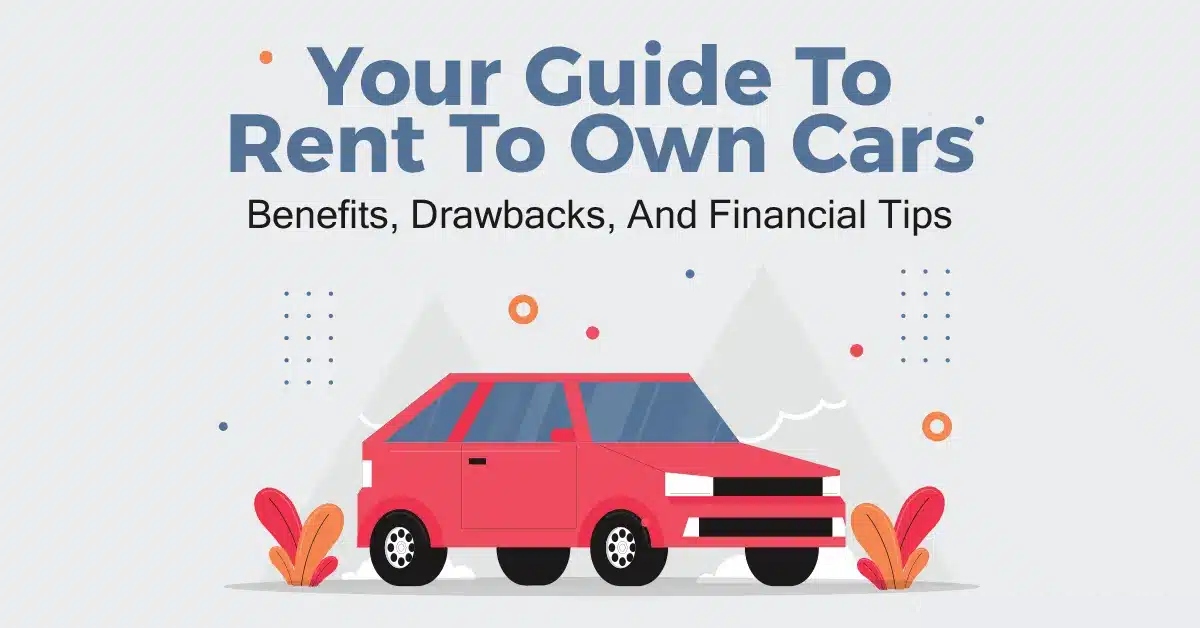For individuals facing credit challenges or lacking the funds for an upfront deposit, rent-to-own car programs can appear to offer a second chance at vehicle ownership. These programs often advertise “no credit check” and “zero deposit” terms, which may appeal to those with limited financing options. However, behind the convenience lies a complex landscape that demands careful consideration. Understanding the mechanics of rent-to-own arrangements is essential to avoid common pitfalls and ensure long-term satisfaction.
How Rent-to-Own Car Programs Work:
Unlike traditional auto loans or leases, rent-to-own car agreements blend elements of short-term rental contracts with installment-based purchases. The buyer typically selects a used vehicle from a participating dealership or agency, agrees to weekly or bi-weekly payments, and gradually earns ownership over time.
These programs frequently skip traditional credit approval processes. According to the Consumer Financial Protection Bureau (CFPB), this model can be especially attractive to individuals with poor or nonexistent credit history. However, the lack of credit checks often translates into higher payment frequency and limited vehicle selection.

Key Options and Providers:
Rent-to-own vehicles are often available through buy-here-pay-here (BHPH) dealerships, regional used car chains, and third-party rent-to-own platforms. Some programs offer in-house maintenance packages or warranty coverage, while others focus solely on payment plans. Unlike conventional car dealerships, these businesses may not report payments to credit bureaus, meaning on-time payments typically won’t improve credit scores.
Experts recommend comparing multiple providers and reading all contract terms thoroughly. Automotive finance advisor Jerry Edgerton, formerly with CBS MoneyWatch, notes that “some programs may include balloon payments, early termination fees, or additional service charges that aren’t made obvious up front” (Source).
Costs and Considerations:
The total cost of a rent-to-own vehicle often exceeds the market value of the car due to added interest-like fees, administrative costs, and higher depreciation. According to a 2024 report from the National Consumer Law Center (NCLC), consumers in rent-to-own agreements pay substantially more over time than buyers using traditional financing methods (NCLC Report).
Additional factors to consider:
- Payment frequency: Weekly or bi-weekly payment models can strain monthly budgeting.
- Vehicle condition: Rent-to-own vehicles are often older models with higher mileage.
- Repossession risk: Missing even one payment may result in immediate repossession without the protections standard auto loans provide.
- No credit improvement: Because payments typically aren’t reported to credit agencies, there's no credit-building benefit.
Common Mistakes to Avoid:
- Not reviewing the fine print. Some agreements include non-refundable fees or vague ownership clauses.
- Assuming ownership is guaranteed. Ownership usually transfers only after the final payment and strict adherence to the contract.
- Skipping a vehicle inspection. Since these are often high-mileage used cars, a third-party inspection can identify mechanical issues before signing.
- Ignoring insurance requirements. Some providers mandate full coverage, which adds to overall cost.
Recent Trends and Industry Data:
Interest in rent-to-own vehicle programs surged during the 2020s due to rising auto loan rejection rates and increased cost of living. A 2023 Pew Research Center survey revealed that 1 in 5 Americans with subprime credit considered alternative financing methods like rent-to-own within the previous 12 months (Pew Research). Meanwhile, digital rent-to-own platforms have emerged, offering more transparency but still operating outside conventional lending oversight.
Conclusion:
Rent-to-own cars with no credit check and no deposit may offer a lifeline for those unable to secure traditional auto financing. However, the benefits are often counterbalanced by higher long-term costs and fewer consumer protections. Careful planning, comparison of providers, and a thorough understanding of terms can make the difference between a helpful alternative and a financial misstep.
Frequently Asked Questions (FAQs):
What is the difference between rent-to-own and leasing?
Rent-to-own typically involves ownership at the end of the term, whereas leasing returns the car to the dealer.
Can a rent-to-own car be returned early?
Some agreements allow early returns, but may include penalties or forfeiture of previous payments.
Do rent-to-own payments build credit?
In most cases, no. Since providers often don’t report to credit bureaus, payments won’t help improve credit scores.
Is insurance required for rent-to-own vehicles?
Yes, most programs require full insurance coverage during the agreement term.
What happens if a payment is missed?
Repossession can occur quickly, often without grace periods or leniency that traditional lenders may offer.

Helpful Resources:
- Consumer Financial Protection Bureau – Auto Loans
- National Consumer Law Center – Buy Here Pay Here
- Federal Trade Commission – Understanding Car Buying Contracts
Citations:
- Consumer Financial Protection Bureau, “What is a Rent-to-Own Car?”
- National Consumer Law Center, “Road to Nowhere: Consumer Protection in the Used Car Market”
- Pew Research Center, “Financial Security and Credit Access in the U.S.”
Disclaimer:
This article is intended for educational purposes only. It does not constitute financial, legal, or consumer advice. Please consult a licensed advisor or legal professional before making any financial decisions.


